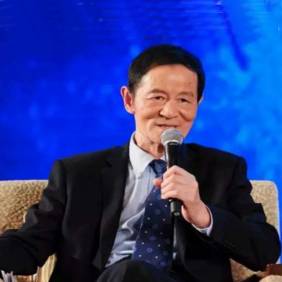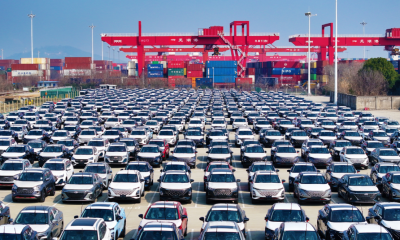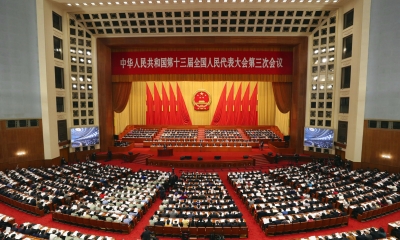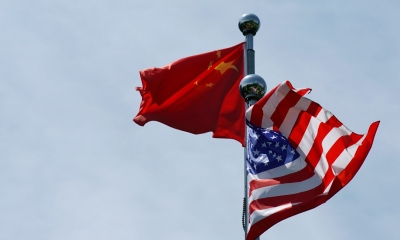WTO Rules and China’ s Right of Development Are Fundamental
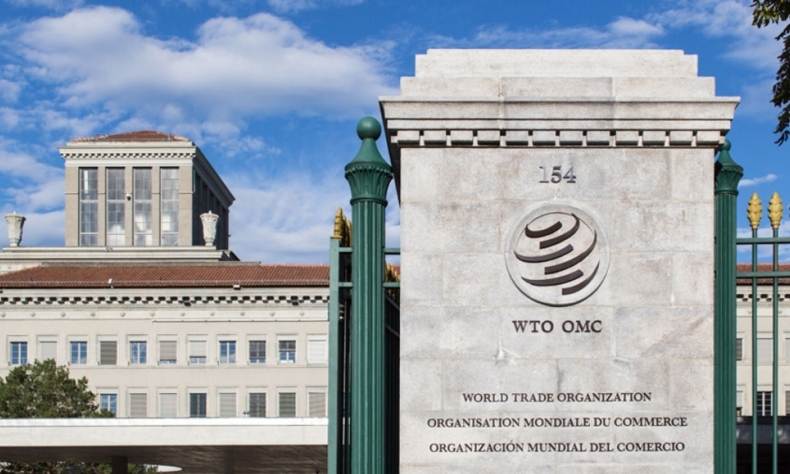
China’s intention is to protect the authority of WTO and its rules, and to protect China’s right of development. These two principles are unshakable.
The intensifying tension in the China-US trade has aroused great media attention recently. Everyone has their own interpretation and opinion and understanding towards it. Some struggle to understand why China is taking a tough line on the issue and hitting back with countermeasures of equivalent of scale and impact. Why has China decided to fight it out? Is it not afraid of economic loss?
The answers to these questions are clear, since this issue is not simply about the trade restrictions of billions of US dollars. It involves significant principles. The first is whether WTO rules and multilateral trade mechanisms are still meaningful and applicable. WTO rules are fundamental. This is the unshakable principle. The issue also concerns China’ s right to develop emerging and high-end technologies and the great strategy of Made in China 2025 which is essential to China’ s rejuvenation. This is another unshakable principle.
The WTO Cage
Trump’ s government has initiated a Section 301 investigation on China and imposed unilateral tariffs checklist on this basis. This action completely ignores the basic rules of the WTO.
The document of Understanding on Rules and Procedures Governing the Settlement of Disputes, which is made under clauses 22-23 of disputes settlement mechanism of GATT, prohibits any of its members from imposing unilateral restrictions or tariffs on other members.
The US is a member of WTO and has signed the document.
The US launched a Section 301 investigation on the EU in 1998; in response EU resorted to the WTO and won the case.
After that, the US committed that it would never contravene the WTO rule system and launch a Section 301 investigation again.
Today, the US is infringing WTO rules and its own commitment to initiate unilateral investigations and levy tariffs towards other WTO members, simply based on its own domestic laws. These actions are invalid and illegal in nature; hence it is totally justifiable that China has resorted to the WTO to stop them.
However, the ROK did not do this. Instead it negotiated with the US alone and traded for “exemption” of steel and aluminum tariffs by making concessions to the US-ROK free trade agreement. This action set aside WTO rules and made US steel and aluminum tariffs legal and valid. This new Section 301 investigation and the tariffs on China’ s 50 billion USD export products completely violate WTO rules. If China too stoops to compromise and makes concessions in exchange for “exemptions”, then what is the use of the WTO?
The multilateral trade mechanism, which has taken generations of effort to establish since the WW II, is now being undermined by the unilateralism and protectionism of Trump’s Administration.
The unilateral protectionist campaign launched by the US is a fundamental battle between multilateralism and unilateralism, between globalized free trade and protectionism. It calls into question the future of globalization and the global free trade rules and system.
Supporting globalization and maintaining the multilateral trade mechanism with the WTO at its core are the unwavering stance of China’s leadership; they are also responsibilities that befit China as a major country. If China does not stand up and fight the US Section 301 investigation and the unilateral tariff measures, confine these wrong actions to the cage of the WTO, and save the multilateral trade mechanism, then China cannot be deemed a responsible major country.
Tariffs towards China Are a Strategic Move
If you carefully study the list released by the office of the US Trade Representative, which covers more than 1300 Chinese products to be subjected to 25% tariffs, then you will see that it does not have much relevance to the Section 301 investigation.
The Section 301 investigation involves technology transfer and intellectual property rights, but not trade in products. So if China really has certain problems as listed in the investigation report, then the proper response would be to report any where China is trying to impose mandatory technology transfers to the WTO which has clear and comprehensive regulations for dealing with such problems.
Resolving these problems under the regulations of WTO is not a difficult task. If China has violated intellectual property rights then it is a straightforward matter to invoke related laws and ask for compensation.
However, tariff measures concern problems including illegal price dumping and illegal product subsidies, which relate to a separate issue.
So why has the final result of the Section 301 investigation become levying 25% tariffs on Chinese products?
The logic here is confusing.
After taking a closer look at the list, you will discover that these items generally lie in eight categories – technologies and products of aeronautics and space, products of new generation information technology, medicine and medical equipment, agricultural machinery, numerical-controlled machine tools and robots, nuclear reactors, ships and railway, especially high speed railway transport equipment and systems – which happen to coincide with the ten major fields of development listed in Made in China 2025.
It is obvious that the Section 301 investigation is just a pretext for Trump’s government to undermine Made in China 2025.
It is apparent that Trump’s action is a strategic attempt to prevent China from surpassing the US in emerging industries.
More importantly, this concern does not arise with countries like the UK; it is limited to one country that has just been defined in US National Security Strategy report as a strategic rival.
Hence this is a strategic fight for the right to development, which far transcends the field of trade. Implementing the Made in China 2025 strategy, which aims to establish China’s own high-end manufacturing system, is China’s inherent right as a sovereign country. No country has the right to deprive China of the right to development.
Have there been problems in the course of China’s opening up? Of course there have. But if there are individual cases involving government compulsory technology transfer or IPR violation, or problems of opaque procedures for examination and approval of business establishment, both parties, on the basis of irrefutable facts, can resolve these problems by negotiation under the relevant regulations of the WTO.
Over nearly four decades of interaction since the US and China established diplomatic ties, both parties have achieved successful results in numerous similar cases.
However, the US has now adopted a new tactic of targeting the rejuvenation of China’s manufacturing.
Therefore, China must present firm opposition to the US measures; only by imposing strong counter-measures can it protect its legal right.
Some discussions about the issue are focusing on the possible losses these two tariff lists might bring, especially to China. These calculations are necessary, but they are not of top priority.
The top priority is the principle – the matter of who is in the right.
On this issue, the US is the active provoker while China is passively involved. To stand by and allow our rights to be violated by other countries without justification is a form of self-abuse.
China is certainly opposed to any kind of trade war, but if the US insists on starting one, can we turn the other cheek? Absolutely not. We must stand up without hesitation to defend ourselves.
The US Intends to Subdue China without Fighting
Who wants to wage a trade war? China does not, but the US does.
Trump once said that a trade war is a good thing, because it will be easy to win. Wilbur Ross also said that the trade war is already happening every day.
But, Trump has now let out the message that the US and China will reach an agreement over their trade issue, and Treasury Secretary Munchin has also suggested that fighting a trade war with China is not the aim of the US, and that the US is willing to negotiate with China.
These statements indicate that the trade war is not the ultimate goal for Trump Administration; what it really wants is to have China come to the negotiating table, make concessions to the US, and accept its demands.
But even if China does as the US wishes, the US will still quite possibly impose its tariffs. The US hopes that China will go down without a fight.
Therefore, whether waging a trade war or sitting down for negotiations; these are means, not ends. The true intention of these actions is to force the other party to accept the preferential “fair trade” principle of the US, which comes down to the US as No.1 while others suffer losses.
Larry Kudlow, the White House economic adviser, recently said that he believes it is possible to settle trade disputes with China in three months, but that tariff measures are not just a bluff. His statement can be interpreted as meaning that the US intends to negotiate with China, but will still impose tariffs. Here, trade war is just the continuation of trade policy by other means, and negotiation is trade war by the table.
China’s intention is to protect the authority of WTO and its rules, and to protect China’s right of development. These two principles are unshakable.
According to this stance, only if the US abides by the WTO rules, quits the Section 301 investigation, and stops imposing unilateral tariffs and suppressing Made in China 2025, can both parties come back to the table and negotiate the relevant issues under the framework of the WTO system.
Only by respecting these two principles can China and the US settle or alleviate the current intense disagreement.
However, if the US continues to labor under the misapprehension that it can do whatever it wants and impose a trade war on China because the whole world is afraid of it, China will firmly stick to these two principles and fight to the end.
The author is a Senior fellow of Center for China and Globalization(CCG), also a senior fellow of Chongyang Institute for Financial Studies, Renmin University of China
Source : Global times, April 10, 2018
Opinion articles reflect the views of their authors, not necessarily those of China Focus
 Facebook
Facebook
 Twitter
Twitter
 Linkedin
Linkedin
 Google +
Google +



